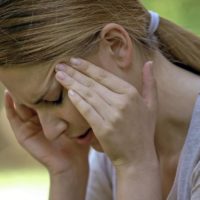Dizziness is one of the most often reported health problems. Surgery, medications, and vertigo exercises are just a few for dealing with dizziness. Vertigo, another name for dizziness, is the perception of motion when no actual movement occurs. Many different illnesses, some minor and others more severe, may induce dizziness. In particular, benign positional vertigo, or BPPV, will be discussed since it is a common cause of vertigo.
Lightheadedness is distinct from dizziness and deserves its own category. This may not seem like a big deal, but these symptoms are being caused by two very different things and will be treated in two very different ways. While medicine may help alleviate the symptoms of dizziness, it does nothing to address the underlying cause.
There are several approaches to dealing with dizziness, including herbal remedies and special exercises designed to alleviate the condition (called “vertigo exercises”). The medical definition of vertigo is an unfounded sense of motion when nothing is in motion. It’s been likened to the sensation of spinning, tilting, or falling.
Most people who experience vertigo also experience nausea or stomach illness. In addition to making it more difficult to stand and walk, this may also impair your sense of balance, increasing the risk of falling. Most cases of vertigo are brought on by benign positional vertigo (BPPV). Debris in the inner ear’s balancing organs is to blame for this condition. Vertigo is caused by tiny particles irritating the balance receptors.
Treatment For Vertigo
A lot of grownups go to the doctor complaining of vertigo. Vertigo affects 3% of the population under 60 and 10% over 60. The incidence of recurrence is between 40% to 50% every year. Almost everyone has experienced a brief period of dizziness at some time. Still, persistent bouts of vertigo are the leading indicator of vestibular dysfunction, particularly related to shifts in head position.
Vertigo may have central origins involving the brain, central nervous system, or peripheral ones involving the inner ear’s sensory organs. Conditions external to the brain, such as drugs and alcohol, may also profoundly impact cognitive functioning. However, they are not considered major causes. Heart illness and rhythm irregularities are other conditions with indirect effects on the brain that may cut off oxygen to the brain and result in dizziness.
The Epley maneuver is the most often used therapy. It entails four distinct rotations of the patient’s head and torso, performed at varying speeds and maintained for around 30 seconds each. The patient’s head and torso are moved in a certain way to cause the dislodged crystals to migrate down the ear canal and into the appropriate inner ear chamber. After three rounds of therapy, success rates for this condition reach 98.4%.
Clinical experience has shown that individuals with vestibular disorders usually suffer from a variety of cognitive deficiencies, including difficulties focusing attention, problems with spatial awareness and coordination, and memory loss at the short-term level. Multiple diseases and conditions, such as ataxia, neck discomfort, low back pain, cervicobrachial syndromes, ankle instability, knee instability, and osteoarthritis have been linked to vestibular dysfunction.
Taking medicine or dietary supplements can alleviate symptoms such as nausea, motion sickness, and dizziness. Antihistamines, anticholinergics, and benzodiazepines are a few examples of vertigo treatment that fall under this category. These therapies may be found in either pharmaceutical or nutraceutical forms. Alterations to your diet that might be useful include increasing the water you consume.

